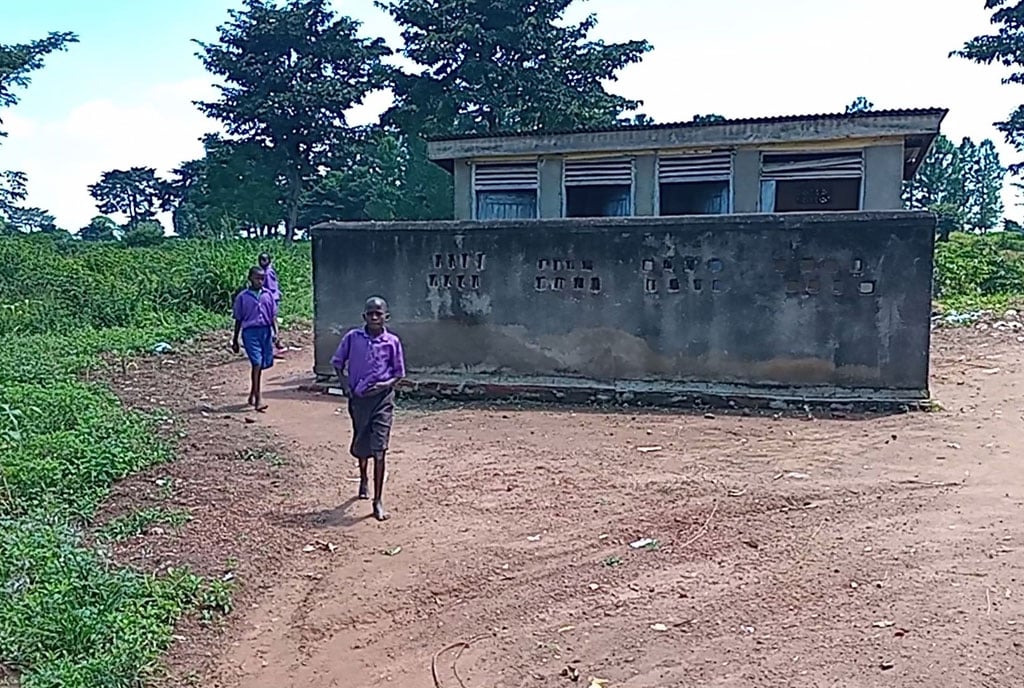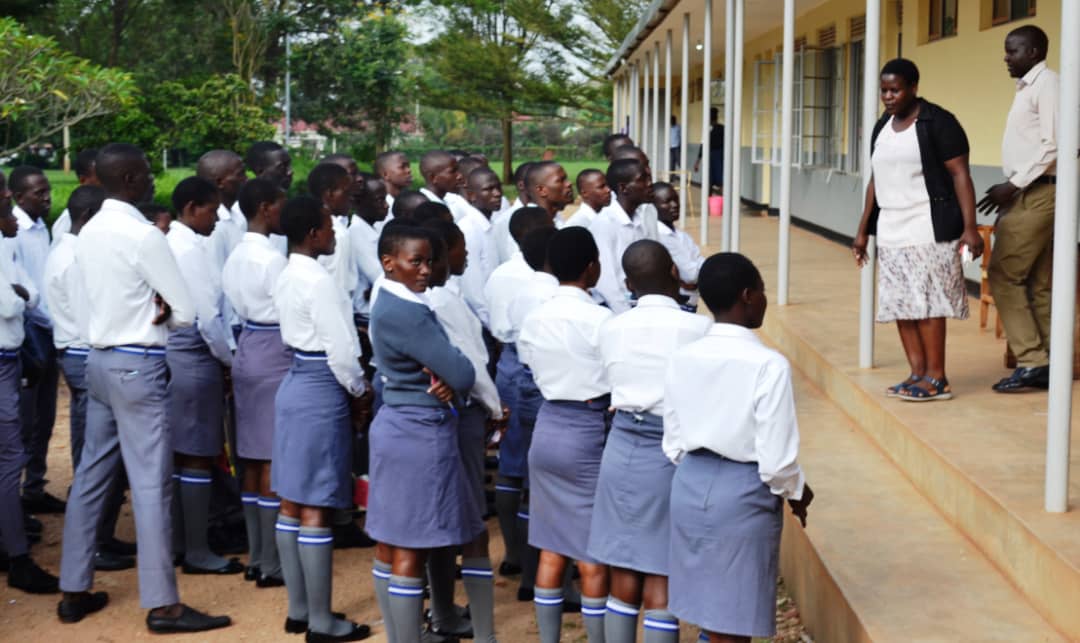Prime
Our biggest fear is living, albinos cry

SURVIVOR: Mkwama was almost sold to killers by Mutei (RIGHT). PHOTOS BY FREDRICK KATULANDA
After travelling all the way from Kitale to the Tanzanian border town of Buzuruga in the hope of finding a bus conductor’s job, little did Robinson Mkwama know that he was just a disposable item in his friend Nathan Mutei’s get rich quick mission. For that, he will rot in prison for 17 years. Read on:-
After luring the 20 year-old hawker to Tanzania under the pretext of securing him the job, Mutei had organised to sell his albino friend to human body parts for about Shs612 million. The parts would have been used in witchcraft. But Tanzanian detectives posing as customers pounced on Mutei and saved Mkwama from the painful and fatal eventuality that awaited him.
Abandoned by his parents at an early age in Nairobi, Mkwama was brought up in an orphanage in Nairobi where he pursued his education to O’level. Last year, Mkwama was adopted by a business woman in Kitale who hired him as a watchman in her Motherland Hotel. For centuries, human body parts have been used as ingredients for witchcraft. To obtain body parts, body part death merchants kill in order to harvest specific organs.
No easy walk
But things have not been easy for them with the advent of the nation-state in Africa where murder is a capital offence, meaning witchdoctors can only acquire these body parts from underground organ hunters.
Cases similar Mkwama’s, where people disappear mysteriously, only for their bodies to be discovered several days later minus various parts are so many in Africa that they are treated as routine crimes in some countries.
According to the South African Police Service Research Centre reports, there is a belief that body parts taken from live victims are rendered more portent by their screams, which means victims must be subjected to pain before death.
Ritual killings have been reported in Mozambique where the country’s Human Rights League has blamed them on the proliferation of witchdoctors from western Africa. Authorities have also confirmed that although most of the organs trafficked into that country are for transplants, extraction of organs for witchcraft also happens.
Human skin appears to be one of the most sought-after organs by ritual killers in Africa.
During the early 2000s, there were widespread cases of people being killed and skinned in Mbeya region of Tanzania and the Mwiki outskirts of Nairobi.
High demand
Investigations by the media and police revealed there was a high demand for the human skin in Malawi, Zambia, Mozambique, South Africa where it fetched $2,400 (about Shs5.4 million) to $9,600 (about Shs21.6 million) depending on the age of the victim.
In an effort to raise awareness about the trade in human skin, Tanzania’s chief government chemist’s once kicked up a storm at an international business fair in Dar es Salaam by displaying skin and other human body parts.
Nigeria has the highest number of occult killings in the continent. Not surprisingly, the vice has found thematic expression in the country’s vibrant film industry. Cases of children being abducted and ritually slaughtered are so many in southwest Nigeria that they sparked a spate of murderous protests and mob lynching early last year that left more than 20 suspected kidnappers dead.
The murder in London of a Nigerian child, which British police named “Boy Adam” for lack of positive identification, in September 2001, brought to international attention Nigeria’s ritual killings.
Forensic examinations on Adam’s torso, found floating in River Thames, revealed that he was a native of Yoruba Plateau in Nigeria and the state of the body indicated a style of ritual killing practised in West and Southern Africa.
International attention
Although this case came about barely 10 days after the September 11 terrorist attack on the US, it prompted such a huge media coverage that retired South African President Nelson Mandela and Nigerian soccer star Nwanko Kanu joined the rest of the world in appeals for clues leading to the arrest of Adam’s killers.
But even after the arrest of 22 West Africans in Britain and an aggressive campaign by Metropolitan police in Nigeria to track down the boy’s mother, the case was never resolved.
A confidential report by the police afterwards established that children were being trafficked into the UK from Africa and used for human sacrifice. The report also claimed that “for spells to be powerful it required a sacrifice of a male child unblemished by circumcision”.
Increased unemployment, poverty, food shortages, famines and greed for money are some of the reasons blamed for the recent surge of deaths attributed to human sacrifice in Uganda.
Although in 2008 alone more than 300 cases of ritual related murders were reported to Ugandan police, only 18 of them made to the courts. The situation was made worse by the fact that several of the high-profile suspects arrested in these cases were parents and relatives of the children victims.
However, all these murders take a backseat compared to the killings of albinos in Tanzania, where Mkwama would have been killed and mutilated.
Bizarrely believed to have magical powers to attract wealth in a short time, albino body parts are a hot commodity for sorcery.
Derogatorily referred to as zeru zeru, ghost in Kiswahili, people with the pigmentation defect in Tanzania are, in certain cases, not safe even among members of their own families.
Relatives for cash
A 35-year-old man from around Lake Tanganyika was accused of trying to sell his 24-year-old wife to Congolese businessmen for $2,000 (about Shs4.5 million) while in Mwanga District a mother was alleged to have sold her albino baby girl to a group of men who slaughtered her and drunk her blood.
“They are cutting us up like chickens. Our biggest fear now is the fear of living. If you leave work at night as an albino you are unsure of reaching home safely. When you sleep you are unsure of waking up in one piece. In the streets you hear people plotting how they can get you,” lamented Zihada Msembo, Tanzanian Albino Society secretary general at the height of the albino killings in 2009.
The case of Elizabeth Hussein, a 13-year-old girl from Shinyanga, was a morbid testimony to the plight of albinos in Tanzania. The girl signed her own death warrant after leaving home alone to watch a film about Jesus in the village centre. On her way back, she was waylaid and hacked to bits by a machete-wielding mob. Last year official reports in Tanzania indicated that 35 albinos were murdered in 2008, mostly women and children, but leaders in the Tanzanian albinism community say the situation is so bad in some areas that children with this genetic defect have to be escorted to and fro school by community or government bodyguard. Even in death they are not safe. Heavy rocks have to be placed on graves to deter grave robbers.
The growth of mining and fishing activities in the Lake Victoria regions of Mwanza, Shinyanga and Mara regions has led to a sudden rise in the demand of albino body parts. Besides the three regions being known for witchcraft, some miners and fishermen believe that albino body parts cause instant success.
Recent reports also indicated that albino body parts harvested in Tanzania were being exported to neighbouring countries where they fetched higher prices. In one incident, a Tanzanian trader was arrested on his way to the Democratic Republic of Congo with an albino baby head in his luggage.
On further questioning the man confessed that a businessman was going to pay for the head by its weight.
Albino population
In North America and Europe one in 20,000 people have some form of albinism but in Tanzania it’s five times as common with one in every 4,000 being an albino. Although various sources put the number of albinos in the country at around 300,000, the World Health Organization says the number hardly exceeds 170,000.
The wave of killing sprees has led to many albinos seeking refuge in the remote Ukerewe Island on the shores of Lake Victoria where murders are rare. Albinism is a hereditary lack of melanin pigment which protects the skin, eyes, and hair from the sun’s ultraviolet rays. But there is a myth in Tanzania’s lake region that a mineral in a native fish species causes the high levels of albinism. Al-Shaymaa Kwegyir, Tanzania’s first albino MP, launched a spirited campaign in 2008 to sensitise the public on these heinous acts.
Sensitisation drive
In October 2008, albinos staged a demonstration in the city of Dar es Salaam to raise awareness and many people supported it. But that same evening one of the demonstrators was followed home by unknown assailants who chopped off her hands and left her for dead.
During his monthly television addresses to the nation President Jakaya Kikwete urges Tanzanians “to discard superstitious beliefs and short cuts to wealth,” instructing the police to crackdown on traditional healers involved in the albino killings.
May 4 is National Albino Day in Tanzania and draws representatives with albinism from Ghana, Kenya, Malawi, Senegal, South Africa and United Kingdom.
Africa Insight is an initiative of the Nation Media Group’s Africa Media Network Project.




